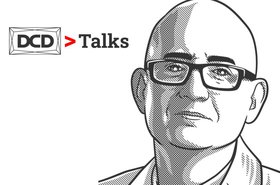Data center operators are continuously searching for ways to maximize the impact of their sustainability initiatives and incorporate energy efficient design into their facilities.
As a critical piece of the power system, generators have come a long way in energy efficiency and design innovations to lower carbon emissions. With these improvements, maintenance schedules can be revisited so that data centers can achieve even more efficiencies.
Diesel generator operators are all too familiar with the problem of “wet stacking,” a buildup of unburned fuel in the exhaust system that can lead to decreased engine performance and premature failure.
Historically, this occurred when generators frequently ran with little or no load, because the generator was improperly sized for the power required, or because adequate load was not available during the exercising period.
However, equipment manufacturers and data center specifying engineers have largely resolved those issues as application knowledge and generator sizing tools have improved. Therefore, currently, wet stacking is more of a concern for data center operators during monthly exercising.
Over time, wet stacking can lead to poor performance and reduced engine life. In addition to shortened engine life and higher maintenance costs, operators may also fall foul of emissions regulations, which have grown tighter in recent years.
For data centers to maintain critical components efficiently and sustainably, wet stacking is an issue that needs to be addressed.
Many facilities conduct load-banking according to maintenance procedures that were drawn up years ago and have never been revisited. However, the latest technology advances make the need for this costly procedure less demanding.
Modern diesel engine designs incorporate the latest technologies that enhance operating efficiency and reduce the gaps between pistons and rings that allow unburnt fuel to escape, as well as other improvements such as a better combustion process, charge air cooling, and assemblies with a finer degree of tolerance. Newer engines burn more efficiently and the conditions that lead to wet stacking are significantly mitigated.
Kohler recently released a study concluding that some of today’s diesel generators can be safely run at 30 percent of the rated capacity or higher as little as once per year, as opposed to once per month, while maintaining optimal performance and staying within emissions guidelines.
In fact, the savings from switching from monthly to annual loaded testing are compelling – with tests showing an 82 percent reduction in total pollutants emitted.
These efficiency improvements should enable generator operators to revisit old assumptions about maintenance schedules and significantly reduce load-banking requirements without violating NFPA110 requirements.
The latest technology advances are so significant that maintenance and operational procedures can be adjusted to deliver value economically and sustainably, all while ensuring reliability, optimal performance, and simplified management of data center resources.
Operators can take advantage of newer, more efficient technologies, thereby creating real impact through continuous improvement.
More from Kohler
-

Sponsored Plug and play: The rise of modular data centers
When it comes to delivering a data center, time is of the essence
-

DCD Awards 2021 shortlist announced!
The 15th annual ceremony will be hosted in London on 8 December & broadcast live worldwide
-

How Kohler thinks big and designs small
Density is increasing in order to keep up with demand


